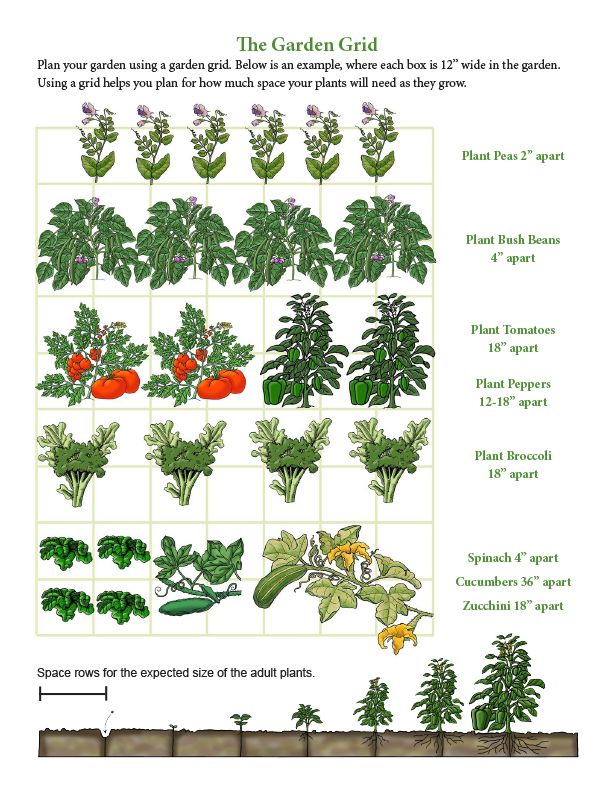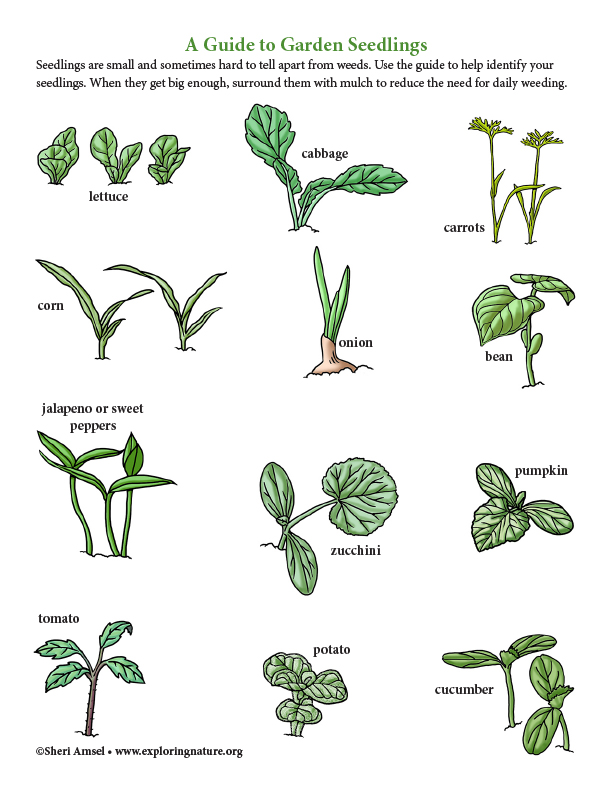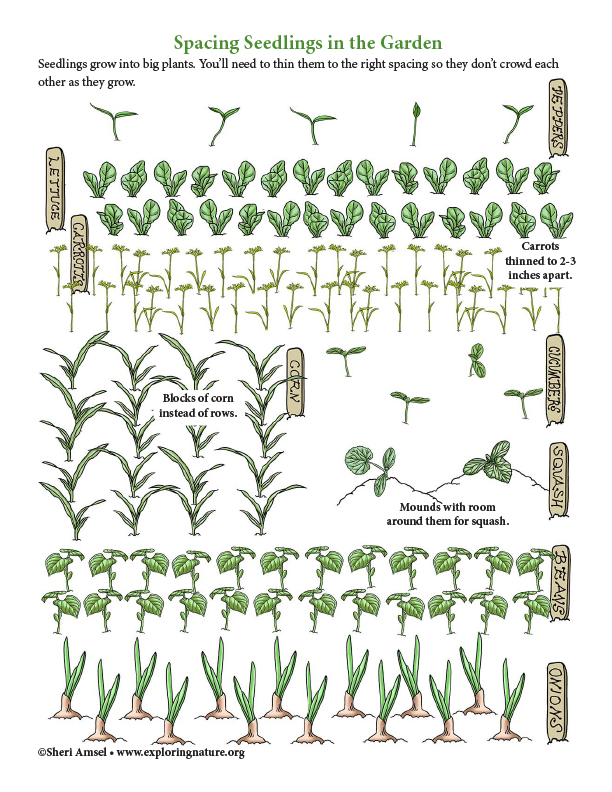

Plan your garden using a garden grid. Below is an example, where each box is 12” wide in the garden. Using a grid helps you plan for how much space your plants will need as they grow. Use graph or loose leaf paper to draw your garden grid each year. Next year you’ll want to “rotate” your plants around on the grid to prevent disease and pests, so save your map from year to year.
Seedlings are small and sometimes hard to tell apart from weeds. Use the guide to help identify your seedlings. When they get big enough, surround them with mulch to reduce the need for daily weeding.
Seedlings grow into big plants. You’ll need to thin them to the right spacing so they don’t crowd each other as they grow.
When you research information you must cite the reference. Citing for websites is different from citing from books, magazines and periodicals. The style of citing shown here is from the MLA Style Citations (Modern Language Association).
When citing a WEBSITE the general format is as follows.
Author Last Name, First Name(s). "Title: Subtitle of Part of Web Page, if appropriate." Title: Subtitle: Section of Page if appropriate. Sponsoring/Publishing Agency, If Given. Additional significant descriptive information. Date of Electronic Publication or other Date, such as Last Updated. Day Month Year of access < URL >.
Amsel, Sheri. "Garden Planning Grid and Seedling Identification and Thinning Guide" Exploring Nature Educational Resource ©2005-2024. December 13, 2024
< http://www.exploringnature.org/db/view/Garden-Planning-Grid-and-Seedling-Identification-and-Thinning-Guide >



